Address
304 North Cardinal
St. Dorchester Center, MA 02124
Work Hours
Monday to Friday: 7AM - 7PM
Weekend: 10AM - 5PM
Address
304 North Cardinal
St. Dorchester Center, MA 02124
Work Hours
Monday to Friday: 7AM - 7PM
Weekend: 10AM - 5PM
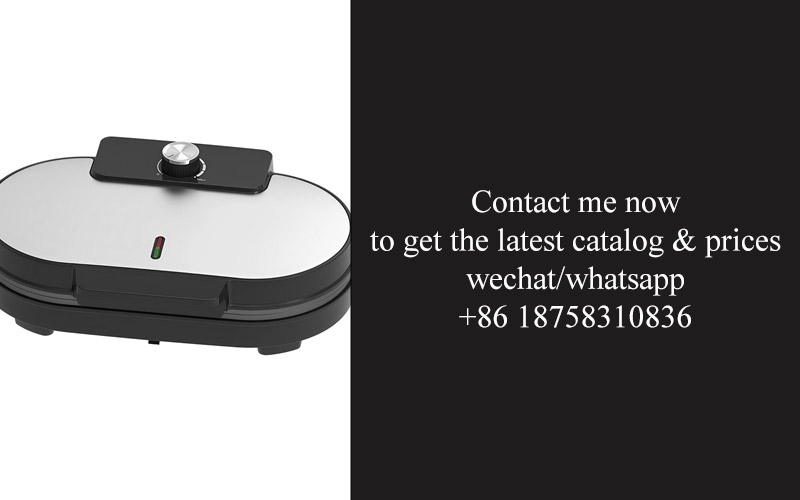
In the world of kitchen appliances, the choice of a waffle maker can greatly impact your breakfast experience. Non-Teflon waffle makers have become increasingly popular, offering a range of benefits that set them apart from traditional non-stick models. From improved health and safety to superior cooking performance and long-lasting durability, these waffle makers provide a compelling option for anyone who loves making delicious waffles at home. Let’s explore the various aspects of non-Teflon waffle makers and discover why they might be the right choice for your kitchen.
Waffle makers have become a beloved kitchen appliance for many households. They offer a convenient way to make delicious, crispy waffles right at home. With just a few simple ingredients and minimal preparation, you can enjoy warm, golden-brown waffles that are perfect for breakfast, brunch, or even dessert.
The traditional waffle maker typically features two plates that sandwich the batter, creating the iconic grid pattern on both sides of the waffle. These makers come in various designs and sizes, from compact models suitable for small apartments to larger, more luxurious versions with extra features.
One popular type is the non-stick waffle maker. It has a special coating that prevents the batter from sticking to the plates, making it easy to remove the waffles once they’re cooked. This non-stick surface also allows for easier cleaning, as there’s no need for excessive scrubbing to get rid of stuck-on batter.
However, concerns have been raised about the safety of non-stick coatings. Some studies suggest that when these coatings are heated to high temperatures, they may release harmful chemicals into the food. This has led many consumers to look for alternative options, giving rise to the popularity of non-Teflon waffle makers.

Non-stick coatings have long been a staple in the world of cookware, prized for their convenience and ease of use. They allow food to effortlessly slide off the surface, making cooking and cleaning a breeze. However, there is a growing awareness of the potential downsides associated with these coatings.
One of the main concerns revolves around the chemicals used in non-stick coatings. Polytetrafluoroethylene, commonly known as PTFE or Teflon, is a synthetic polymer that has been widely used for its exceptional non-stick properties. But when heated to high temperatures, there is a risk that PTFE can break down and release toxic fumes. Although the temperatures required to reach this point are generally higher than what most home cooking involves, it’s still a cause for concern.
Another issue is the durability of non-stick coatings. Over time and with frequent use, the coating can start to wear off. Eventually, the non-stick surface becomes less effective, causing food to stick and making the cookware more difficult to clean. This not only affects the performance of the waffle maker but also raises questions about whether consuming flakes of the coating is safe.
There are also environmental considerations. The process of manufacturing non-stick coatings involves potentially harmful chemicals, and disposing of cookware with worn-out coatings can contribute to environmental pollution. As people become more conscious of the impact of their choices on the planet, these factors are increasingly coming into play when evaluating the use of non-stick coated waffle makers.
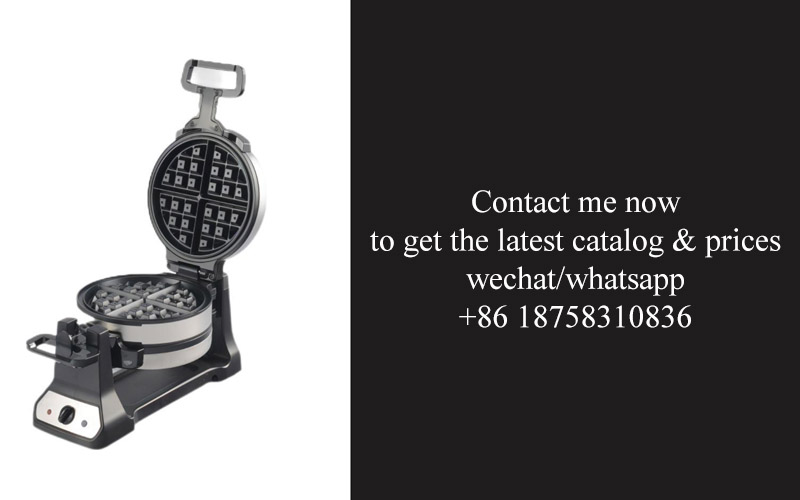
In response to the concerns surrounding traditional non-stick coatings, a new generation of waffle makers has emerged – the non-Teflon waffle makers. These innovative appliances are designed to provide all the benefits of a classic waffle maker without the potential drawbacks associated with PTFE or other non-stick chemicals.
One type of non-Teflon waffle maker features ceramic cooking plates. Ceramic is known for its natural non-stick properties and even heat distribution. It offers a more eco-friendly alternative, as it doesn’t involve the chemical processes required for traditional non-stick coatings. When you pour the batter onto a ceramic waffle maker, it cooks evenly, ensuring that every part of your waffle is perfectly crispy on the outside and soft on the inside.
Cast iron waffle makers are another excellent option. Cast iron has been used in cooking for centuries, prized for its ability to retain heat and create a beautiful, crisp crust. With a well-seasoned cast iron waffle maker, the batter won’t stick, and each waffle will have a unique, rustic charm. Plus, cast iron is incredibly durable and can last for generations with proper care.
There are also stainless steel waffle makers on the market. Stainless steel is highly resistant to rust and corrosion, making it a long-lasting choice. It may not have the natural non-stick properties of ceramic or cast iron, but with a light oiling or a bit of butter, it can produce waffles with a delicate, lacy texture that many people love. The solid construction of stainless steel ensures even cooking and consistent results every time.
These non-Teflon alternatives are not only better for your health but also for the environment. They reduce the reliance on potentially harmful chemicals and offer a more sustainable way to enjoy delicious waffles at home. As more and more consumers become aware of these benefits, non-Teflon waffle makers are steadily gaining popularity and proving that you don’t have to sacrifice quality or convenience to make a healthier choice.
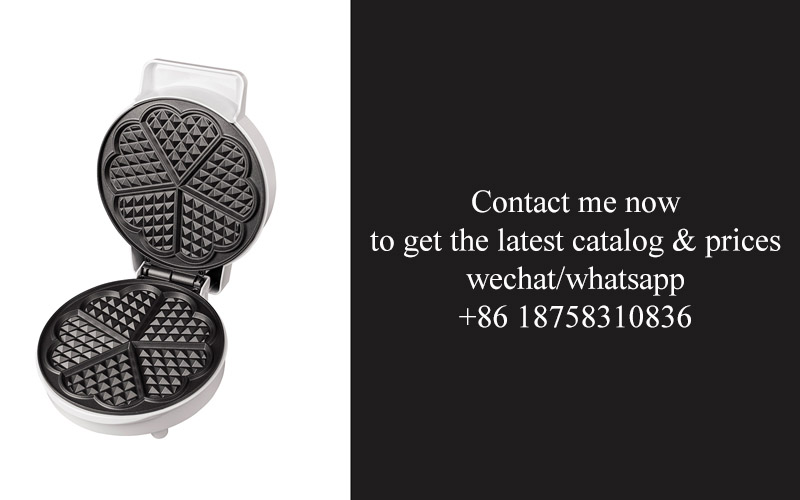
Choosing a non-Teflon waffle maker can bring a multitude of benefits that go beyond just enjoying delicious waffles. One of the key advantages is the peace of mind it offers in terms of health and safety. Without the risk of harmful chemicals potentially leaching into your food, you can feel confident serving waffles to your family, especially if you have young children or are pregnant. You no longer have to worry about the coating degrading over time and contaminating your meals.
From a culinary perspective, non-Teflon waffle makers often provide better heat distribution. This means that your waffles will cook more evenly throughout, with no hot spots that could burn one part while leaving another undercooked. The result is consistently perfect waffles, with a crispy exterior and a fluffy interior, every time you use the appliance.
In addition, non-Teflon waffle makers are typically more durable. Traditional non-stick coatings can scratch and wear off over time, but materials like ceramic and cast iron are built to last. With proper care, a high-quality non-Teflon waffle maker can be a lifelong investment. This durability also makes them a more sustainable choice, reducing the need for frequent replacements and the waste associated with disposing of old appliances.
Cleaning can also be easier with non-Teflon options. While they may require a bit more initial effort, such as greasing the plates or soaking them after use, there’s no need to worry about damaging a delicate non-stick surface. In the long run, this can save you money on cleaning products and ensure that your waffle maker maintains its performance for years to come.
Moreover, these waffle makers often add a touch of traditional charm to your kitchen. The process of using a cast iron or ceramic waffle maker can feel more authentic and rewarding, harkening back to older cooking methods. It can become a cherished tool in your kitchen arsenal, passed down through generations and creating lasting memories with each batch of waffles.
All in all, opting for a non-Teflon waffle maker is a decision that combines health, performance, and sustainability, making it a smart choice for any waffle lover who wants to enjoy their treats without compromising on quality or safety.
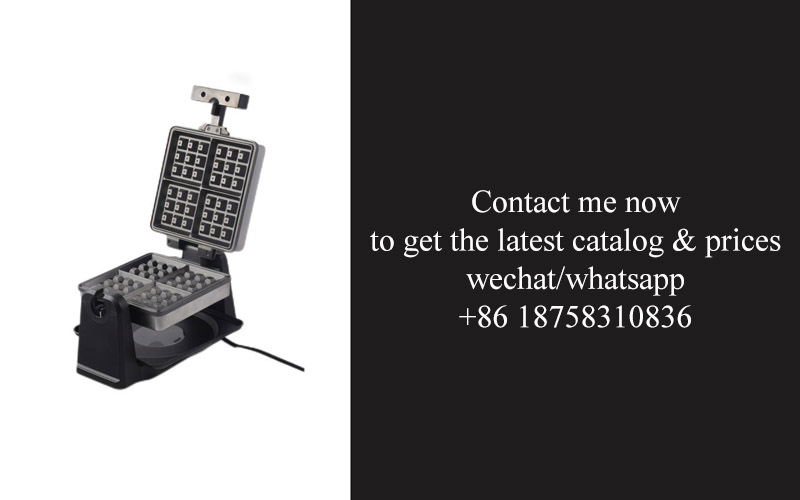
Using and maintaining a non-Teflon waffle maker is slightly different from using a traditional non-stick model, but with a little extra care, it can be just as easy and rewarding. When it comes to usage, start by preheating the waffle maker according to the manufacturer’s instructions. This is usually around 350-400 degrees Fahrenheit for most models. Once it’s hot, brush or spray the cooking plates with a light coating of oil or melted butter. This will help prevent the batter from sticking and ensure even browning.
When pouring the batter onto the waffle maker, distribute it evenly using the back of a spoon. The amount of batter you use will depend on the size of your waffle maker, so refer to the user manual for guidance. Close the lid gently and cook the waffles until they reach your desired level of crispiness and golden color. This typically takes about 3-5 minutes, but again, it varies based on the model and your personal preference.
After cooking, don’t be tempted to clean the waffle maker immediately. Allow it to cool down to avoid any potential warping or damage to the cooking plates. Once it’s cool, use a soft cloth or paper towel to wipe away any excess oil or crumbs. For stuck-on batter, a gentle scrub with a soft brush or a non-abrasive sponge should do the trick. Avoid using harsh cleaning pads or metal utensils, as these can scratch the surface.
For deep cleaning, especially if there are any stubborn spots, mix a paste of baking soda and water. Apply this paste to the cooking plates and let it sit for a few minutes before wiping it off. Rinse thoroughly with warm water and dry completely to prevent rust, particularly for cast iron models. Regular maintenance like this will keep your non-Teflon waffle maker in top condition.
It’s also important to store your waffle maker properly. If it’s a foldable model, make sure it’s completely cool before folding it up to avoid warping the plates. Store it in a dry place, away from direct sunlight and heat sources. By following these simple steps, your non-Teflon waffle maker will reward you with delicious waffles for many breakfasts to come.
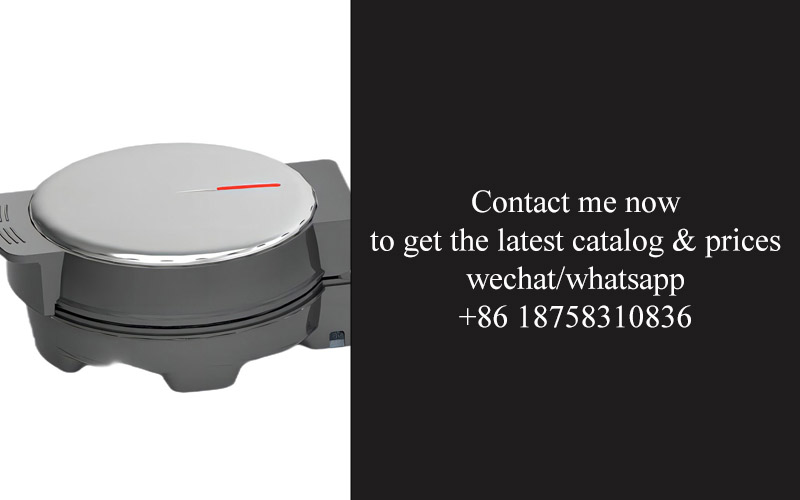
When comparing non-Teflon waffle makers to traditional ones, there are several key factors to consider. In terms of health concerns, non-Teflon waffle makers have a clear advantage. Traditional non-stick waffle makers coated with PTFE or similar chemicals pose a potential risk of releasing toxic fumes if overheated. This can be a worry, especially for frequent users. Non-Teflon options, such as those made from ceramic, cast iron, or stainless steel, eliminate this concern entirely. They don’t rely on potentially harmful coatings, making them a safer choice for you and your family.
Performance-wise, there are differences as well. Non-Teflon waffle makers often provide more even heat distribution. Traditional non-stick waffle makers can sometimes have hot spots that may result in uneven cooking. In contrast, materials like cast iron and ceramic excel at retaining and distributing heat evenly. This means that each waffle will cook uniformly, with no burnt edges or undercooked centers. The result is consistently high-quality waffles every time.
Durability is another area where non-Teflon waffle makers shine. Traditional non-stick surfaces can scratch and wear off over time, diminishing their non-stick properties and requiring replacement. Non-Teflon waffle makers, particularly those made from cast iron or high-quality stainless steel, are built to last. With proper care, they can become long-term fixtures in your kitchen, providing years of reliable service.
Ease of use might initially seem different, but it’s not necessarily harder. Traditional non-stick waffle makers are convenient because you can just pour the batter without much preparation. However, non-Teflon waffle makers can also be quite straightforward. For example, after preheating and greasing the plates, the process is similar. And once you get used to the slightly different handling, many people find the slight extra effort required for non-Teflon waffle makers to be well worth it for the other benefits.
Cleaning methods vary too. Traditional non-stick waffle makers are usually wiped clean easily due to their surface. Non-Teflon waffle makers might require a bit more attention. You might need to lightly grease the plates before and after use and avoid harsh scrubbing. But with the right approach, cleaning is still manageable and does not take much more time than cleaning a traditional one.
In summary, while non-Teflon waffle makers might require a small adjustment in usage and cleaning routines compared to traditional ones, they offer significant advantages in terms of health, performance, and durability. For those who prioritize these aspects, the switch to a non-Teflon waffle maker is a worthwhile investment that can elevate the quality and safety of your homemade waffles.

Customer reviews and feedback for non-Teflon waffle makers have been overwhelmingly positive. Many users praise the peace of mind that comes with knowing there are no harmful chemicals in their cooking process. They appreciate being able to make waffles for their family, especially for children and pregnant women, without worrying about potential health risks. The fact that these waffle makers eliminate the concern of coatings breaking down over time is a huge relief for health-conscious consumers.
In terms of performance, customers consistently rave about the even heat distribution. They find that the waffles come out perfectly cooked every time, with a crispy exterior and a fluffy interior. The consistent results have turned many into loyal fans of non-Teflon waffle makers. Users also enjoy the variety of textures and flavors they can achieve by experimenting with different batters and toppings on these versatile appliances.
Durability is another aspect that receives high marks. Customers are impressed by how well these waffle makers hold up over time. Unlike traditional non-stick models that may need to be replaced frequently due to scratched or worn surfaces, non-Teflon waffle makers, particularly those made from cast iron and ceramic, seem to improve with age. With proper care, they maintain their excellent condition and continue to produce top-notch waffles for years.
The ease of use, while slightly different, is not a major issue for most users. After a short adjustment period, many people find that the process of using non-Teflon waffle makers becomes second nature. They appreciate the ritual of preheating and greasing the plates, which adds a bit of old-fashioned charm to their breakfast routine. The extra steps do not detract from the overall enjoyment of making and eating delicious waffles.
Cleaning is an area where opinions vary, but even those who find it a bit more involved than cleaning traditional non-stick waffle makers still consider it worth the effort. Users suggest that taking a little extra time to clean these waffle makers properly ensures they last longer and perform better. Some even develop a cleaning routine that becomes a quick and easy part of their post-waffle making process.
Overall, the customer reviews and feedback paint a very positive picture of non-Teflon waffle makers. Users are willing to embrace the small changes in usage and cleaning habits because of the significant benefits in health, cooking performance, and durability. These reviews serve as a testament to the growing popularity and satisfaction with these types of waffle makers in the world of home cooking.

When it comes to choosing a waffle maker for your kitchen, the decision between non-Teflon and traditional models is an important one. Non-Teflon waffle makers stand out for their health benefits. By eliminating the risk of harmful chemical coatings breaking down at high temperatures, they offer a safer option, especially for cooking for children and pregnant women. This alone makes them a compelling choice for many health-conscious consumers.
In terms of performance, non-Teflon waffle makers have much to offer. Their even heat distribution ensures consistently well-cooked waffles every time. Users can enjoy a variety of textures and flavors by experimenting with different batters and toppings. The ability to achieve perfect results with each use is highly valued, making these waffle makers a favorite among those who take their breakfast seriously.
Durability is another strong point in favor of non-Teflon waffle makers. Unlike traditional non-stick models that may need frequent replacement due to scratched or worn surfaces, non-Teflon options like cast iron and ceramic are built to last. With proper care, they can serve your kitchen faithfully for many years, becoming long-term fixtures in your home.
The ease of use might initially seem different, but it’s not a deal-breaker. After a short adjustment period, users find the process of using non-Teflon waffle makers quite manageable. The preheating and greasing steps add a touch of traditional charm to the breakfast routine and are well worth the effort for the overall enjoyment of making and eating delicious waffles.
Cleaning might be a bit more involved compared to traditional non-stick waffle makers, but it’s not overly burdensome. Users develop effective cleaning routines that ensure the longevity and optimal performance of these waffle makers. The extra time and effort required for cleaning are considered a small price to pay for the benefits in health, cooking performance, and durability.
In conclusion, while non-Teflon waffle makers may require some adjustments in usage and cleaning habits, their advantages in health, performance, and durability make them an excellent choice for your kitchen. Customer reviews and feedback overwhelmingly support this, highlighting the satisfaction and joy that these waffle makers bring to breakfast lovers everywhere.

When it comes to non-Teflon waffle makers, there are several common questions that people often have. One frequently asked question is about the materials used in these waffle makers. Non-Teflon waffle makers can be made from a variety of materials including cast iron, ceramic, and stainless steel. Each material has its own set of advantages. For example, cast iron provides excellent heat retention and distribution, while ceramic offers even heating without the need for greasing. Stainless steel is known for its durability and resistance to rust. Understanding the properties of these materials can help you choose the best one for your needs.
Another common question is about the performance of non-Teflon waffle makers. Many users want to know if they can achieve the same level of crispiness and texture as with traditional non-stick waffle makers. The answer is yes. Non-Teflon waffle makers, especially those made from cast iron and ceramic, are known for their ability to produce perfectly cooked waffles with a crispy exterior and a fluffy interior. The even heat distribution ensures that each waffle is cooked uniformly, resulting in consistent and delicious outcomes every time.
Some people wonder about the ease of use of non-Teflon waffle makers. While the process might be slightly different from using a traditional non-stick model, it’s not overly complicated. After preheating the waffle maker, you simply brush the plates with a bit of oil or butter before pouring in the batter. This step ensures that the waffles release easily and have a nice golden color. Once you get used to this routine, it becomes quick and easy.
Cleaning is another area of concern for potential buyers. Unlike traditional non-stick waffle makers, non-Teflon waffle makers do require a bit more attention when it comes to cleaning. However, with proper care and the right cleaning tools, it’s not a difficult task. You might need to use a soft brush or cloth to wipe down the plates after each use. Some users find it helpful to line the plates with parchment paper for easier cleanup. By developing a good cleaning routine, you can keep your non-Teflon waffle maker in great condition and ready for the next batch of waffles.
Durability is also a key consideration. Non-Teflon waffle makers are built to last. Unlike traditional non-stick models that may need to be replaced frequently due to scratched or worn surfaces, non-Teflon options like cast iron and ceramic can last for many years with proper care. Investing in a high-quality non-Teflon waffle maker means you won’t have to worry about replacing it as often, making it a cost-effective choice in the long run.
In summary, non-Teflon waffle makers offer a range of benefits that make them worth considering for your kitchen. From their health-conscious design to their excellent cooking performance and durability, they provide a reliable option for making delicious waffles at home. The initial learning curve and extra cleaning steps are well worth the effort for the overall improvement in your breakfast experience.